Bagels, a beloved staple in many cultures, embody a perfect blend of culinary simplicity and rich tradition. Originating from the Jewish communities of Poland in the 17th century, these doughy delights have journeyed from obscure beginnings to global popularity. Characterized by their dense, chewy texture, a result of their unique preparation involving boiling before baking, bagels have transcended beyond a mere breakfast item to become a versatile culinary icon. From the classic plain bagel to innovative gourmet varieties, this article will explore the fascinating world of bagels, their history, varieties, and the enduring appeal that makes them a favorite across continents.
How to Make Bagels
To make bagels, start by mixing warm water, yeast, and sugar in a large bowl, allowing the mixture to sit until it becomes frothy. This usually takes about five minutes, indicating that the yeast is active. Next, add flour and salt to the mixture, kneading the dough until it becomes smooth and elastic.
This process often requires about 10 minutes of kneading. Once the dough is ready, divide it into equal portions and shape each into a ball. Then, press a finger through the center of each ball to form a ring and stretch the dough slightly to create the classic bagel shape.
Allow the shaped dough to rest for approximately 10 minutes. Meanwhile, bring a large pot of water to a boil and add a sweetener like honey or barley malt syrup. Boil each bagel for about 30 seconds per side, which helps create a chewy exterior.
After boiling, place the bagels on a baking sheet, brush them with an egg wash for a shiny crust if desired, and sprinkle with toppings like sesame seeds, poppy seeds, or coarse salt. Finally, bake the bagels in a preheated oven at 425°F (220°C) for about 20-25 minutes until they are golden brown. Enjoy the freshly baked bagels warm or store them in an airtight container.
Exploring the Diverse World of Bagels
Bagels, with their distinctive chewy texture and round shape, have transcended their Eastern European Jewish origins to become a beloved staple worldwide. This article delves into the myriad of bagel types, tracing their roots and celebrating their evolution.
Traditional Bagels
Plain Bagels: The Classic Choice

The plain bagel, unadorned yet flavorful, is the foundation of all bagels. Its simplicity allows the unique texture and slight sweetness, enhanced by the traditional boiling before baking, to shine through.
Sesame Bagels: A Nutty Twist

Sesame bagels, coated with a generous sprinkling of sesame seeds, offer a nutty aroma and a delicate crunch, making them a popular choice for both breakfast and sandwiches.
Poppy Seed Bagels: A Crunchy Delight
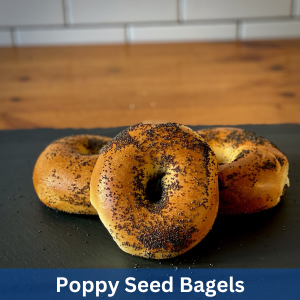
Poppy seed bagels are another traditional variant. The tiny poppy seeds add a crunchy texture and an earthy tone, enhancing the bagel’s flavor profile.
Onion Bagels: For Savory Flavor Lovers

Topped with minced onions, these bagels present a savory, aromatic option. The onions caramelize during baking, adding a sweet depth to the overall flavor.
Garlic Bagels: A Bold Taste
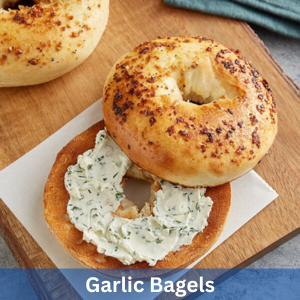
Similar to onion bagels but with a bolder taste, garlic bagels are a favorite for those who enjoy a stronger, more aromatic flavor in their bread.
Salt Bagels: A Simple Yet Flavorful Option

Salt bagels, lightly dusted with coarse salt, offer a simple yet distinctly savory flavor, making them a perfect pair for rich, creamy toppings like cream cheese.
Traditional Bagel Preparation
These traditional bagels share a common preparation method: the dough is first boiled in water, often with a touch of malt, and then baked. This process gives them their characteristic glossy crust and chewy interior.
Whole Grain and Healthy Options
A Healthier Alternative: Whole Wheat Bagels

Whole wheat bagels incorporate whole wheat flour for a more nutritious option, offering a denser texture and a nuttier flavor compared to their white flour counterparts.
Multi-Grain Bagels: Packed with Nutrients
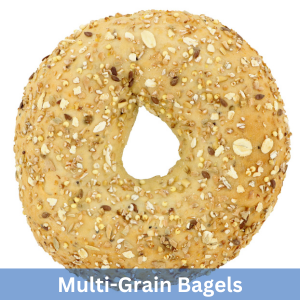
Packed with a variety of grains and seeds like oats, flax, and sunflower seeds, multi-grain bagels are not only flavorful but also a powerhouse of nutrition.
Oat Bran Bagels: A Heart-Healthy Option
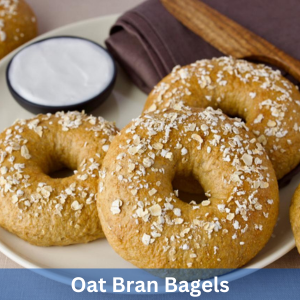
Rich in oat bran, these bagels are known for their health benefits, particularly for heart health and digestion, while providing a tender, slightly sweet taste.
Gourmet and Specialty Bagels
Cinnamon Raisin Bagels: A Sweet Treat

Blending the sweetness of raisins with the warm spice of cinnamon, these bagels are a delightful sweet option, perfect for a breakfast treat or a snack.
Blueberry Bagels: Bursting with Flavor

Loaded with blueberries, these bagels offer a burst of fruitiness and a visually appealing speckled appearance.
Pumpernickel and Rye Bagels: A Deep, Rich Taste

These bagels incorporate rye and pumpernickel flours, delivering a dense texture and a deep, slightly sour flavor characteristic of traditional rye bread.
Asiago Cheese Bagels: A Cheesy Twist
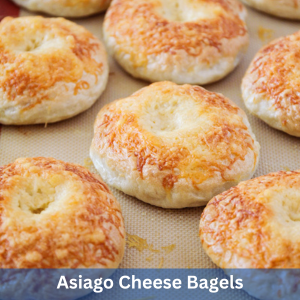
Topped with Asiago cheese, these bagels boast a crusty exterior with a rich, cheesy flavor, making them a savory favorite.
Everything Bagels: A Mix of All Favorite Toppings

Everything bagels feature a mix of various toppings like sesame seeds, poppy seeds, onion, garlic, and salt, offering a flavorful combination in every bite.
Unique and Regional Varieties
Montreal-Style Bagels: A Canadian Take

Montreal-style bagels are smaller, sweeter, and denser than their New York counterparts, boiled in honey-sweetened water and baked in wood-fired ovens.
New York-Style Bagels: The Iconic Chewy Delight

New York-style bagels are large, soft, and chewy, often considered the standard in American bagel making. The unique New York City water is often credited for their distinctive texture.
Bialys: A Polish-Inspired Bagel Cousin

Originating from Poland, bialys are similar to bagels but are not boiled and have a depression in the center, usually filled with onions or other savory fillings.
Global Variations
Around the world, various cultures have adapted and created their own versions of bagels, incorporating local ingredients and tastes.
You may also Raed: Best Sehri And Iftar Buffet Places In Multan
Gluten-Free and Dietary Restriction-Friendly Bagels
Gluten-Free Bagels

Made with alternative flours like rice or almond flour, these bagels cater to those with gluten sensitivities, though they may have a different texture from traditional wheat-based bagels.
Vegan Bagels
Vegan bagels replace traditional ingredients like eggs with plant-based alternatives, ensuring that they adhere to vegan dietary restrictions.
Keto Bagels
Keto-friendly bagels are low in carbohydrates, often made with cheese and almond flour, catering to those following a ketogenic diet.
Also Read: Best Sehri And Iftar Buffet Places In Faisalabad
DIY Bagel-Making at Home
Basic Bagel Recipe and Techniques
Homemade bagel-making can be an enjoyable and rewarding experience. A basic recipe involves high-gluten flour, yeast, water, salt, and a sweetener like malt or honey.
Customizing Flavors and Toppings
Home bakers can experiment with various flavors and toppings, creating personalized bagels that cater to individual tastes.
Tips for Perfect Homemade Bagels
Key tips include properly kneading the dough, ensuring the water is at the right temperature for boiling, and baking it to the perfect golden brown.
Conclusion
The diverse world of bagels offers something for everyone, from traditional varieties to innovative, health-conscious options. Their enduring appeal lies not just in their taste and versatility but also in their rich cultural history and adaptability to global culinary trends.
